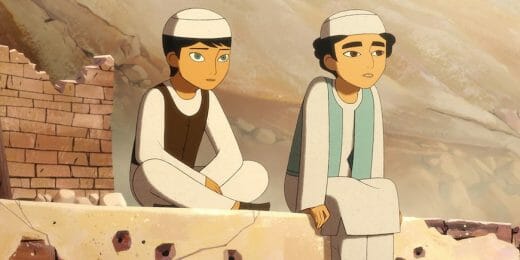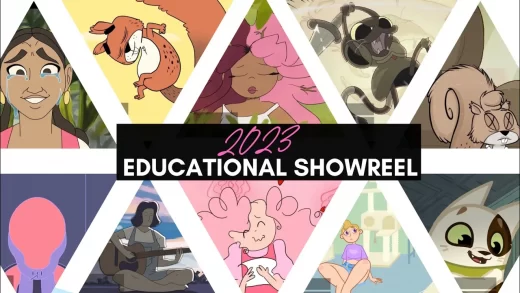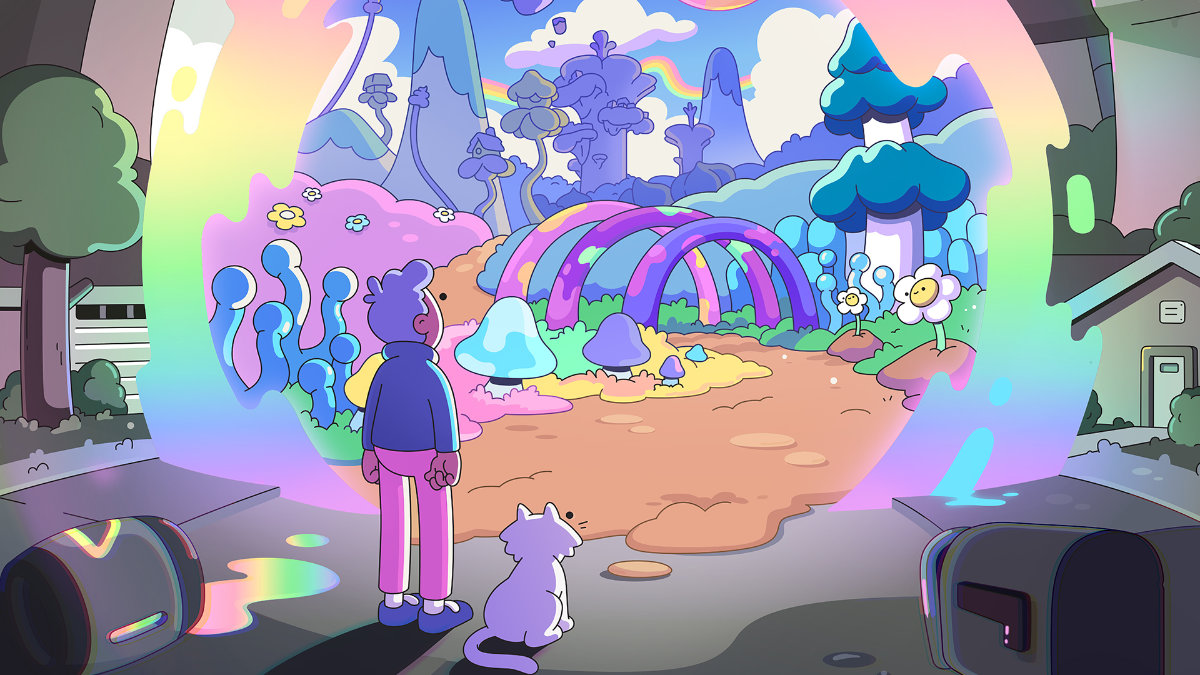
The animated short Dullsville and the Doodleverse is an exploration of creativity and individuality through animation, set between the grey monotony of Dullsville and the vibrant chaos of the Doodleverse. Doodles is the ongoing franchise created by Canadian illustrator Scott Martin (aka Burnt Toast) and is lent star power by the likes of Pharrell Williams. Dullsville and the Doodleverse, created by Golden Wolf in collaboration with Mighty Animation, dazzles with its iconic character design, dynamic visuals, and expressive animation style. With an aesthetic defined by clean vector art, the short is a great example of how animation can thrive in new media.
We spoke with the team from Golden Wolf, including Dotti Sinnott (managing director) and Doodles’ Sammy Moore (executive director), to discuss this one-of-a-kind project. They share insight on their creative process and practical advice; including smart rigging techniques and unique character design, clever uses of Harmony’s node system and advice for working on stylized, fast-paced productions. The production is also a masterclass on how colour and characters can differentiate the cold, repetitive scenes of Dullsville from the endless possibilities of the Doodleverse!
For readers who may not be familiar, please introduce the Doodleverse universe!
Dotti: In the monochromatic town of Dullsville, creativity is a long-lost memory, a myth shrouded in the distant past. The town is a bastion of capitalism, where practicality reigns supreme and fun is a foreign concept. Every aspect of life is utilitarian and purpose-driven. The only hint of color and creativity exist in the form of billboards and products from Dream Pump Industries, a monopolistic empire that looms over the town, owned by the mysterious Mr Gray.
Beyond the drab confines of Dullsville, the Doodleverse emerges as a vibrant haven of imagination and wonder. This enchanting world pulses with boundless creativity, each chromatic hue woven into its very fabric. Here, the extraordinary is commonplace, and delightful adventures unfold at every turn. Consisting of a seemingly infinite constellation of planets, the Doodleverse is a parallel dimension where anything is possible.
Our story universe moves between the realms of Dullsville and the Doodleverse, exploring the themes of creativity, commercialism and individual expression.
How did Golden Wolf and Mighty Animation start working together on this project?
Dotti: We were looking for a fearless partner ready to hit the ground running on this timeline, and we found that in Mighty Animation. Their technical skills and enthusiasm stood out as the right fit for the difficult but exciting task we had ahead.
Is there anything unique about working on the Doodleverse IP?
Dotti: Building story in an expansive universe presents the classic dilemma of too much of a good thing. With everything being possible, narrowing down decision-making presents a unique challenge. We’re having so much fun exploring the universe in all its complexity, even though it’s tough to know when to draw the line.
But by far the most unique aspect of working on the Doodlverse IP is the Doodles community. This vibrant, dedicated fanbase have been deeply invested in the brand since its launch, and their engagement with all of our content has been an invigorating source of inspiration as we build. We’re honored to be bringing the characters they love to life.
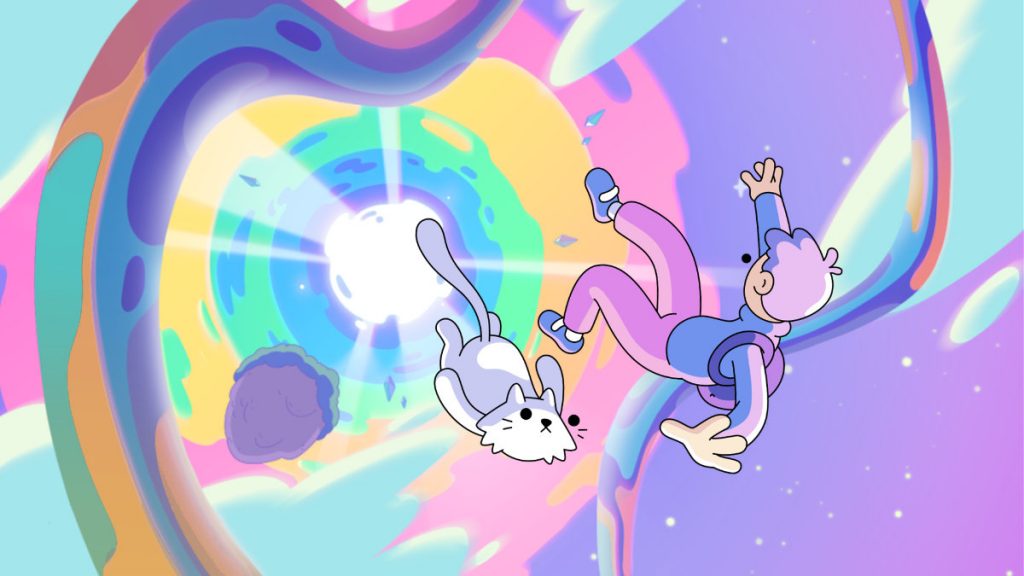
The character design is especially iconic. How did you design, rig and animate those designs?
Sammy: Most of our characters start from the same basic structure; kind of a kidney bean or cashew shape, with rubber hose-style arms and legs. No necks in the Doodles universe! And of course, their eyes float mysteriously above the surface of their faces — that’s just how it works in our world.
For the film, we had the opportunity to push that formula a bit further and play with more exaggerated proportions. That gave the cast a really fun sense of diversity while still keeping things stylistically cohesive. Because the designs are so flat and graphic, they translated really nicely into rigs — especially in Harmony. The clean shapes and limited detail meant we could keep the rigs lightweight, which helped with everything from lip-sync to scene reuse. It made the whole animation process feel more fluid and intuitive.
Why did you choose Toon Boom Harmony for this project, and what did it help you do best?
Sammy: We chose Toon Boom Harmony because the Doodles art style has that clean, vector-based look with defined outlines, and Harmony really lends itself well to that. Keeping the visual style consistent throughout the animation was super important to us, and Harmony made that feel natural.
It also gave us a lot of flexibility — since this was a longer piece with a bunch of characters, being able to reuse and tweak elements without losing quality was a huge time-saver. It let us focus more on the creative side without getting bogged down technically.
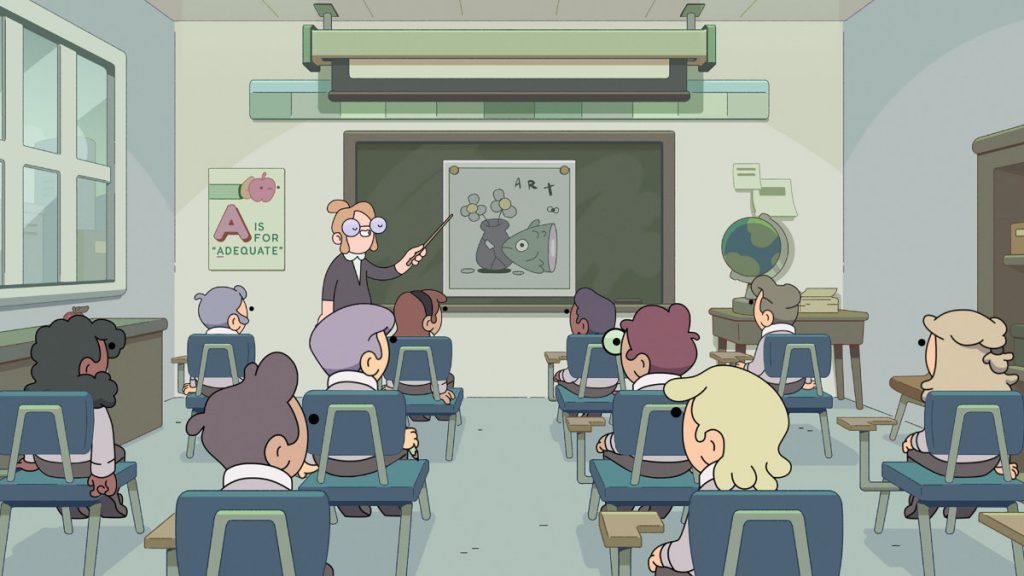
What are some of the signature stylized themes and colour-palettes in a Doodleverse animation?
Sammy: Doodles is known for its use of soft pastel colours. Our hero palette is fairly minimal but also really robust and allows us to create both rich landscapes and bold graphics. We love our pinks and purples and make use of cool and warm pastel tones to create harmony in all the art we make, colour really is the heart of Doodles.
With that said, in the film we wanted to do something different and avoid being too predictable and so we put a huge amount of time and care into developing a new palette for our new world ‘Dullsville.’ This new palette consisted of mouldy greens and dusty greys and browns.
Everything was intended to feel stale but still show signs of life, like a sun bleached photograph or a cluttered dusty attic. That might sound really boring, but we wanted to really tell a story with colour in Dullsville, a place where all the joy and creativity has been sucked dry. To go black & white or greyscale would have been too obvious – we wanted colour to still have a presence beneath the surface, hanging on for life and still salvageable (like the joy of the town’s inhabitants).
Was there a scene that was especially tricky or fun to animate? Can you tell us how you pulled it off?
Sammy: I think my personal favourite scene was our introduction to Dullsville. This scene was both fun and tricky. The purpose of this scene was to introduce Dullsville to the audience, whilst showing the audience that our main characters, Hap and Mello, really don’t fit in there. We wanted to do this as part of a ride-along sequence, following our characters on their tandem bike as they cycle to work. Creating a feeling of juxtaposition between them and their environment was fairly straight forward, as they are so colourful (and ride a tandem bike with mustard rockets).
Setting up Dullsville was a more interesting challenge. An important theme in Dullsville is the idea that everyone is on a sort of ‘auto pilot’ just following along from A to B. Not miserable, but just sort of existing. One of our animators had this amazing idea to represent the repetition and lack of individuality in Dullsville, by creating a sort of zoetrope shot that flickers past a series of houses, showing lots and lots of citizens performing the exact same action as part of their morning routine. It’s definitely my favourite shot in the film, it’s so stylised and poetic that it really stands out to me.
Getting it to read clearly and not be too jarring or nauseating was a real challenge, but we had an incredible team of animators and compositors who really embraced the task.
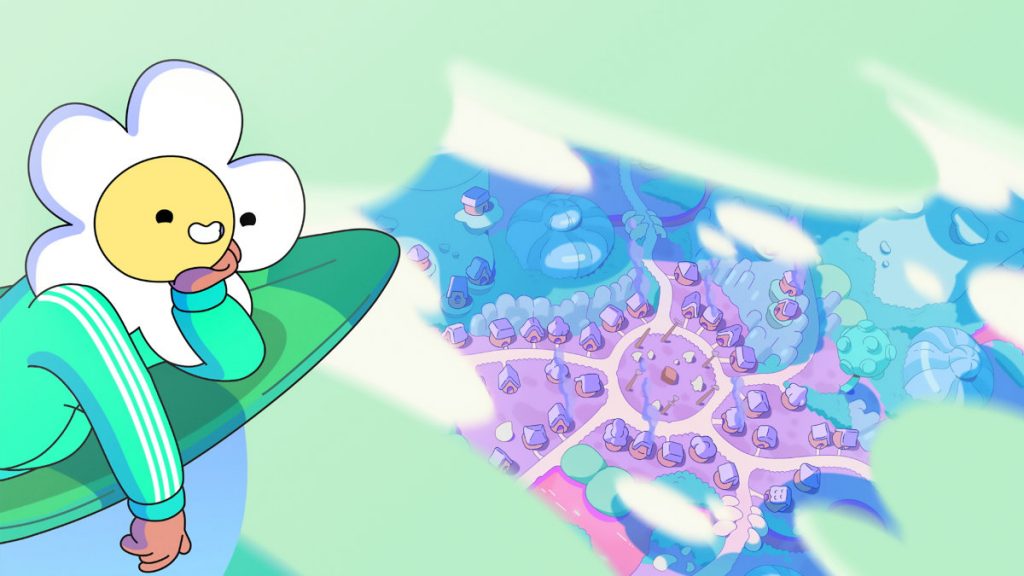
What was the workflow between the two different studios in different parts of the world?
Sammy: Our background of managing international productions at Golden Wolf came in handy as we started planning this film. The incredible production team worked closely with our creatives to set briefs, communicate early and often. And maintain expectations with all our partners across the globe.
A tight schedule with clear communication processes was a must in a global schedule with multiple timezones, and it worked because of the trust and candor from all partners involved.
How did it feel to see the short get over 5 million views so quickly?
Sammy: It was really exciting to see the views shoot up like that. Not just because of the number itself, but because it meant the film was actually reaching people. We put a huge amount of time and love into it, so seeing it get that kind of attention felt like the work was given a real shot at being appreciated.
What meant even more to us was the response from the community. The Doodles community is so passionate and supportive and we knew they were looking forward to the film, so it was amazing to know that we did them proud. Receiving such kind words and praise from the animation community was incredible too, especially as the majority of our team comes from the commercial animation space. It made the whole thing feel that much more special.
And I’ve got to say, it was such a team effort. Everyone involved brought so much talent and heart to it. Seeing all of that resonate with people was a really proud moment for all of us.
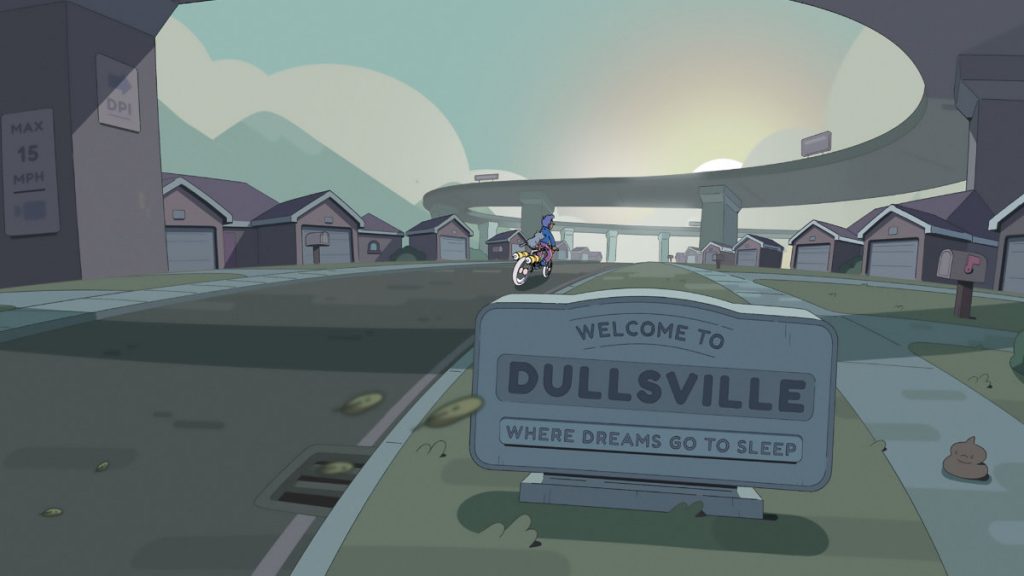
Did your team try anything new on this project, either in animation, character design or production?
Dotti: This was the longest, most deeply narrative piece of content the creative team at Doodles and Golden Wolf have ever produced. Combine this with also running content production for everyday marketing, social media and partner projects, it was an ambitious challenge to take on a story of this scope.
What tips would you give to other animators using Harmony on fast, energetic projects like this?
Dotti: Harmony is a really powerful tool. It has a ton of great shortcuts that can definitely speed up the animation process, especially on a larger project like this one. But I’d say there’s a bit of a trade-off: if you lean too heavily on those shortcuts, things can start to feel a bit stiff or overly automated. You lose some of that spontaneity and life that comes from hand-drawn work.
That’s why I always recommend starting with a rough pass of hand-drawn thumbnails. Even if you’re planning to use rigs or puppets later on. It helps you stay connected to the intention of the scene and makes the performance feel more natural and fun. It’s easy to get caught up in the technical side of things, but that early scribbly stage is where a lot of the charm and clarity really comes through.
- Want to see more from the studios behind Dullsville and the Doodleverse? Be sure to visit the websites for Golden Wolf and Mighty Animation.
- Curious to see more behind-the-scenes interviews about the Doodleverse? Read our interview with Toronto’s Blame Your Brother studio on their work behind a series of Doodleverse music videos.


